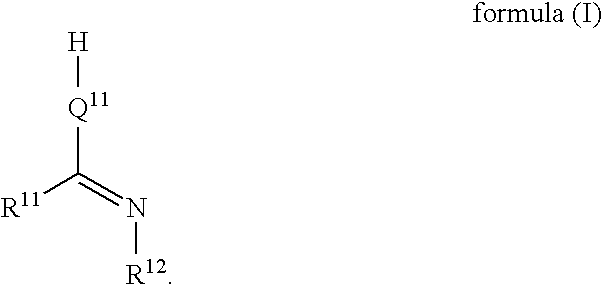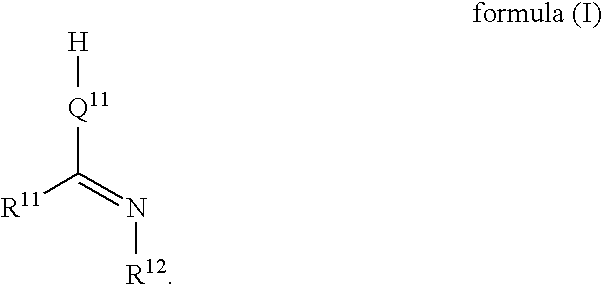Lubricant composition, method for using and preparing thereof and molecular complex compound used for the same
a technology of molecular complex compound and lubricant composition, which is applied in the direction of lubricant composition, organic chemistry, fuels, etc., can solve the problems of increasing the severity of friction conditions, reducing the reliability of apparatus, and difficulty in obtaining a desired low friction coefficient, etc., to achieve excellent properties, reduce friction, and reduce friction. , the effect of low friction
- Summary
- Abstract
- Description
- Claims
- Application Information
AI Technical Summary
Benefits of technology
Problems solved by technology
Method used
Image
Examples
examples
[0084]The present invention will more specifically be explained referring to preferred examples. It is to be noted that materials, reagents, ratio of use thereof, and operation can properly be modified without departing from the spirit of the present invention. Therefore the scope of the present invention is by no means limited to the preferred examples described below.
examples 1 to 8
[0085]As shown in Table 1, the complex compounds (1), (2), (3) and (4) were independently used or used as being respectively dissolved in a lubricant base oil to thereby obtain lubricant for Examples 1 to 8 as listed in Table 1. The fact that the complex compounds (1), (2), (3) and (4) really form the complex compounds was confirmed by DSC (differential scanning colorimetry) which shows complete disappearance of a phase transfer peak attributable to a single carboxylic acid or barbituric acid, and appearance of a new phase transfer peak attributable to the complex compound. It was also found that the keto-enol tautomeric compounds composing the complex compounds (1), (2), (3) and (4) showed pKa of 2 to 12 in their enol forms.
examples 9 to 14
[0092]The complex compounds (5) to (10) were subjected to reciprocating type (SRV) friction wear test under conditions listed below at 40° C. and 120° C. in order to evaluate friction coefficient and apparent viscosity at each temperature.
Test Conditions
[0093]Tests were subjected under Cylinder on Plate Test.[0094]Specimen (friction material): SUJ-2[0095]Plate: 24 mm in diameter, 7.9 mm thick[0096]Cylinder: 11 mm in diameter, 15 mm long[0097]Temperature: 40° C. or 120° C.[0098]Load: 400 N[0099]Amplitude: 1.0 mm[0100]Frequency: 50 Hz[0101]Testing period: for 5 min. after the start of testing
[0102]The result obtained by measuring under above test condition are shown in Table 3.
[0103]
TABLE 3ExampleExampleExampleExampleExampleExample 91011121314MolecularSpecies(5)(6)(7)(8)(9)(10)complexwt %100100100100100100compoundSRV frictionFriction coefficient0.050.040.040.040.070.09wear testApparent viscosity650320300450402000at 400 N, 40° C.at 40° C. (mPa · s)SRV frictionFriction coefficient0.030....
PUM
| Property | Measurement | Unit |
|---|---|---|
| apparent viscosity | aaaaa | aaaaa |
| apparent viscosity | aaaaa | aaaaa |
| apparent viscosity | aaaaa | aaaaa |
Abstract
Description
Claims
Application Information
 Login to View More
Login to View More - R&D
- Intellectual Property
- Life Sciences
- Materials
- Tech Scout
- Unparalleled Data Quality
- Higher Quality Content
- 60% Fewer Hallucinations
Browse by: Latest US Patents, China's latest patents, Technical Efficacy Thesaurus, Application Domain, Technology Topic, Popular Technical Reports.
© 2025 PatSnap. All rights reserved.Legal|Privacy policy|Modern Slavery Act Transparency Statement|Sitemap|About US| Contact US: help@patsnap.com



